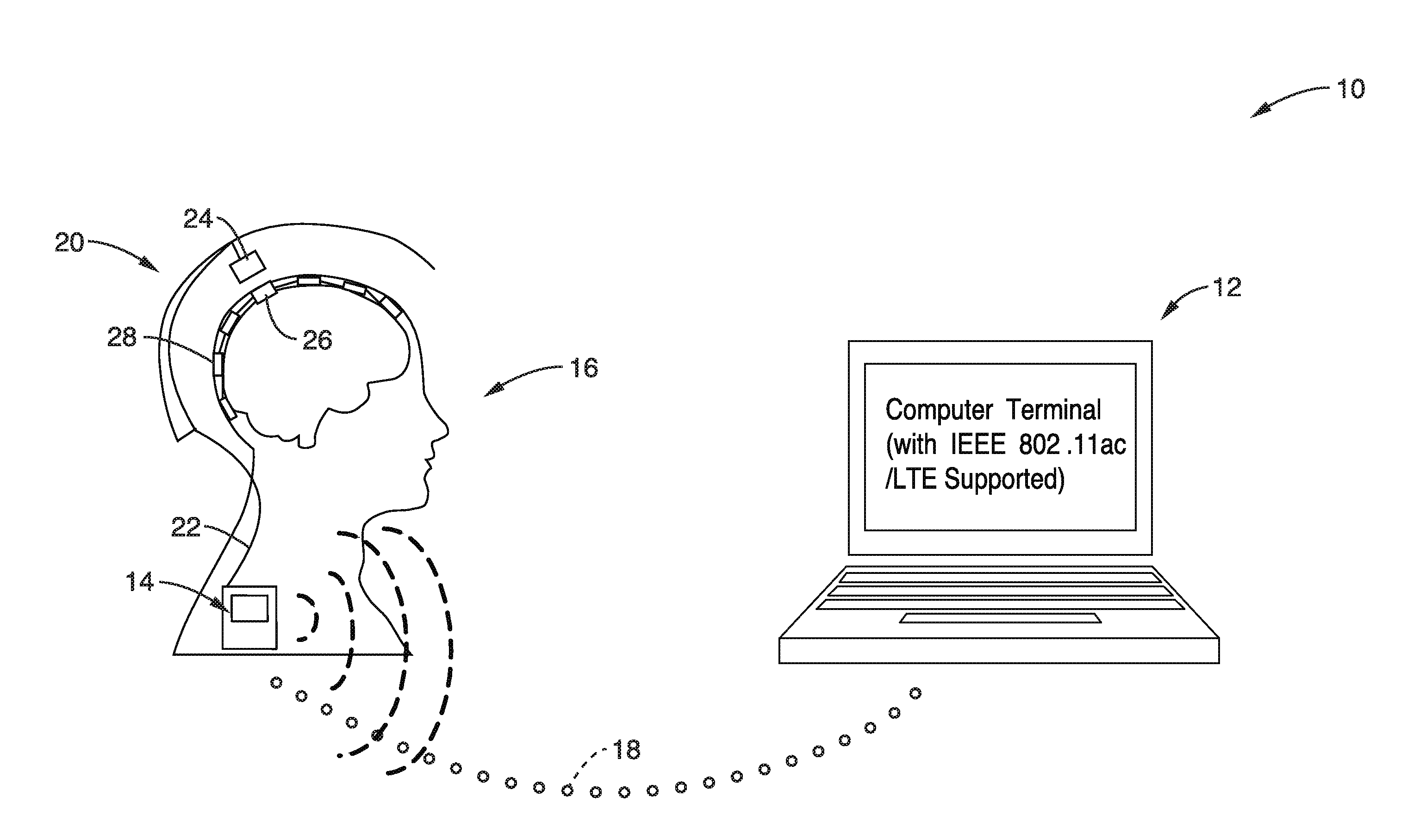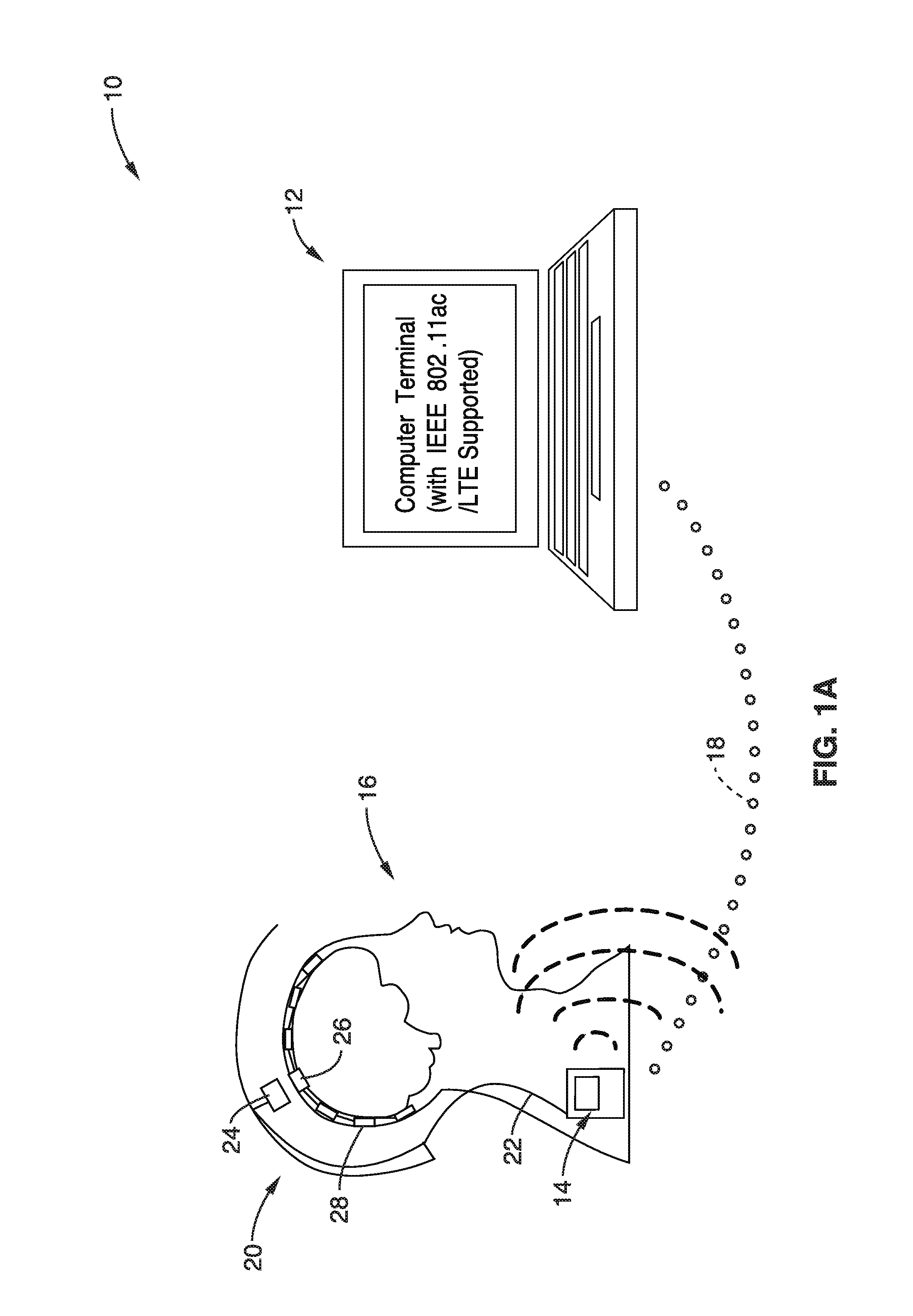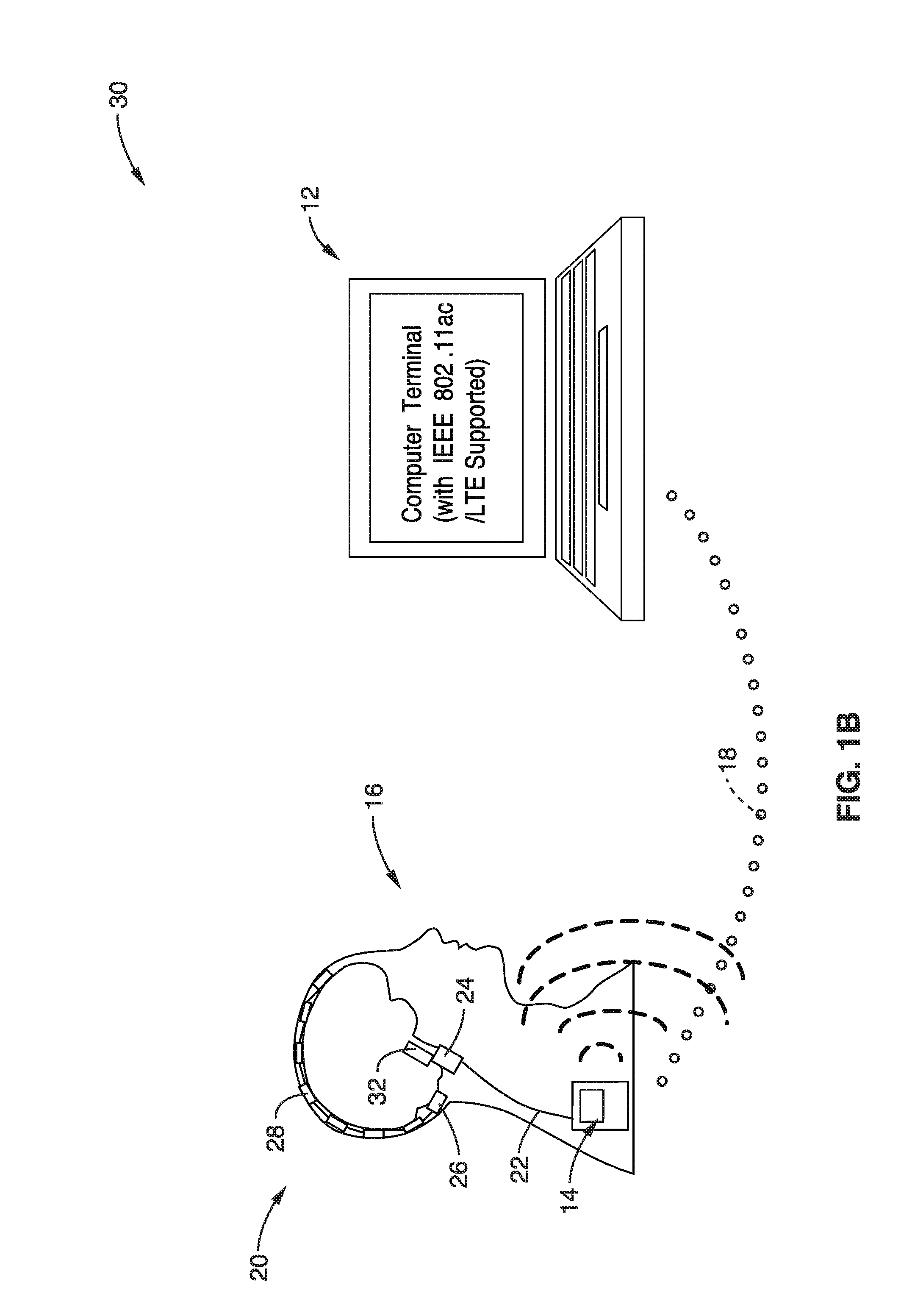Wireless wearable big data brain machine interface
a wearable, big data technology, applied in the field of machine interfaces, can solve the problems of limiting the feasibility of investigating brain activity in a large-scale and fine-resolution view, limiting the freedom of movement of the monitored patient/subject, and low data transfer ra
- Summary
- Abstract
- Description
- Claims
- Application Information
AI Technical Summary
Benefits of technology
Problems solved by technology
Method used
Image
Examples
embodiment 270
[0055]In FIG. 8 the elements follow that of FIG. 2, exemplified here with additional details in the embodiment 270 with an implant recording and transmitting module 272. Inputs are received from multiple electrodes 274, with power received through inductive power coil 276. Within the module are seen multiple 64 channel neural recorders (REC) 278, each of which connects to multiple electrodes within the plurality of electrodes 274. Digitized recording outputs from the multiple recorders 278 are received in circuit block 280 by a multiplexer (MUX) (or serializer) 282, whose single bit-stream output is buffered 283 and drives modulation switches 288, shown comprising four insulated gate FET type transistors (e.g., MOSFETs). A carrier frequency source 284 is seen as a VCO coupled through an inductive bridge 286, to the modulator, which in response to the encoded data from MUX 282 changes output amplitude to dipole antenna 290, thus performing AM, or more precisely On-Off Keying (OOK) mo...
embodiment 310
[0058]In FIG. 9 the elements generally follow that of FIG. 3, exemplified here with additional details in the embodiment 310 with a wearable receive-and-forward module 312, shown with a power coil 314 and input / output signals 316. A modulated radio-frequency is received from the implant module in receive-and-forward module 312 on dipole antenna 318 coupled to a low noise amplifier (LNA) comprising resistors 320a, 320b, inductors 322a through 322d, and transistors 324a through 324d. Output from the amplifier is coupled to a modulator section through an inductive bridge 326 (output half being center-tap biased at voltage Vb) with demodulator having transistors 328a, 328b and resistor 330, which outputs to a low voltage differential drive circuit (LVDS) 332 for outputting differential signals DP and DN.
[0059]An inductive power generator circuit 334 is seen which receives power (e.g., PWR and GND) which is converted to proper voltages as necessary to supply its own circuitry, and to dri...
PUM
 Login to View More
Login to View More Abstract
Description
Claims
Application Information
 Login to View More
Login to View More - R&D
- Intellectual Property
- Life Sciences
- Materials
- Tech Scout
- Unparalleled Data Quality
- Higher Quality Content
- 60% Fewer Hallucinations
Browse by: Latest US Patents, China's latest patents, Technical Efficacy Thesaurus, Application Domain, Technology Topic, Popular Technical Reports.
© 2025 PatSnap. All rights reserved.Legal|Privacy policy|Modern Slavery Act Transparency Statement|Sitemap|About US| Contact US: help@patsnap.com



